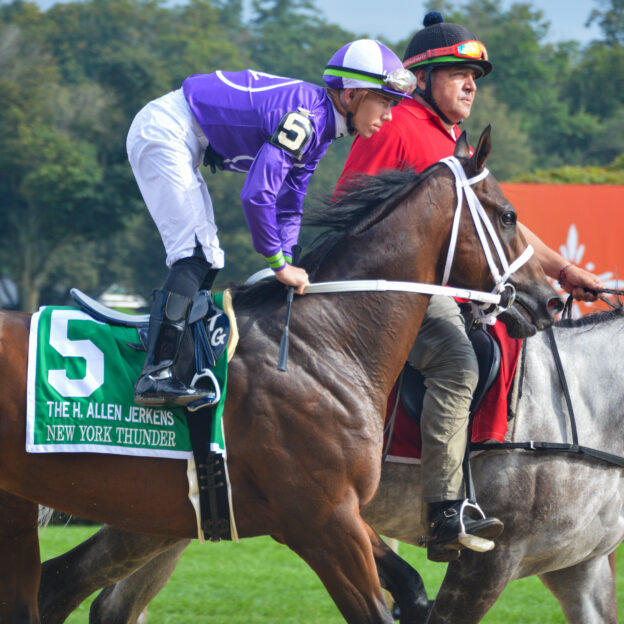I got into horse racing not as a sports fan, but as a horse lover. Thoroughbreds are a special kind; each one is crafted to be the ultimate racing machine. Over the years, I have attended many race days, followed horses’ careers, and visited pristine breeding farms that put any regular horse farm to shame. I have been on the backstretch numerous times and met not just lovely horses, but also incredibly hard-working people; some of them have worked on the track for decades, and for others it’s in the family. I admire them, and I, too, wanted to work in the industry because you get to be so close to the horses and get to love them so much.
In August 2023, I traveled to Saratoga Springs, NY to see its hallowed racetrack on the day of its most famous race, the Travers Stakes. Despite all of the dedication and care that I have seen firsthand, the longer I followed racing, the more it left me disappointed and disillusioned. I knew what had happened to Maple Leaf Mel during the Test Stakes earlier that month. I knew it was possible for something like that to happen again. Breaking down is always a risk. It was 2015 when I saw my first two instances in person. Down Town Allen, who dominated the West Virginia circuit and earned more than a million dollars, tore a suspensory ligament and was later euthanized due to complications with the injury. That same day, national champion Shared Belief fractured his hip and would never race again. I had seen far more safe than unsafe racing, yet the possibility of seeing a breakdown always lingered in my mind. Horses like Ruffian and Barbaro are etched in the sport’s memory. It pains me to say that many others, though, are not.
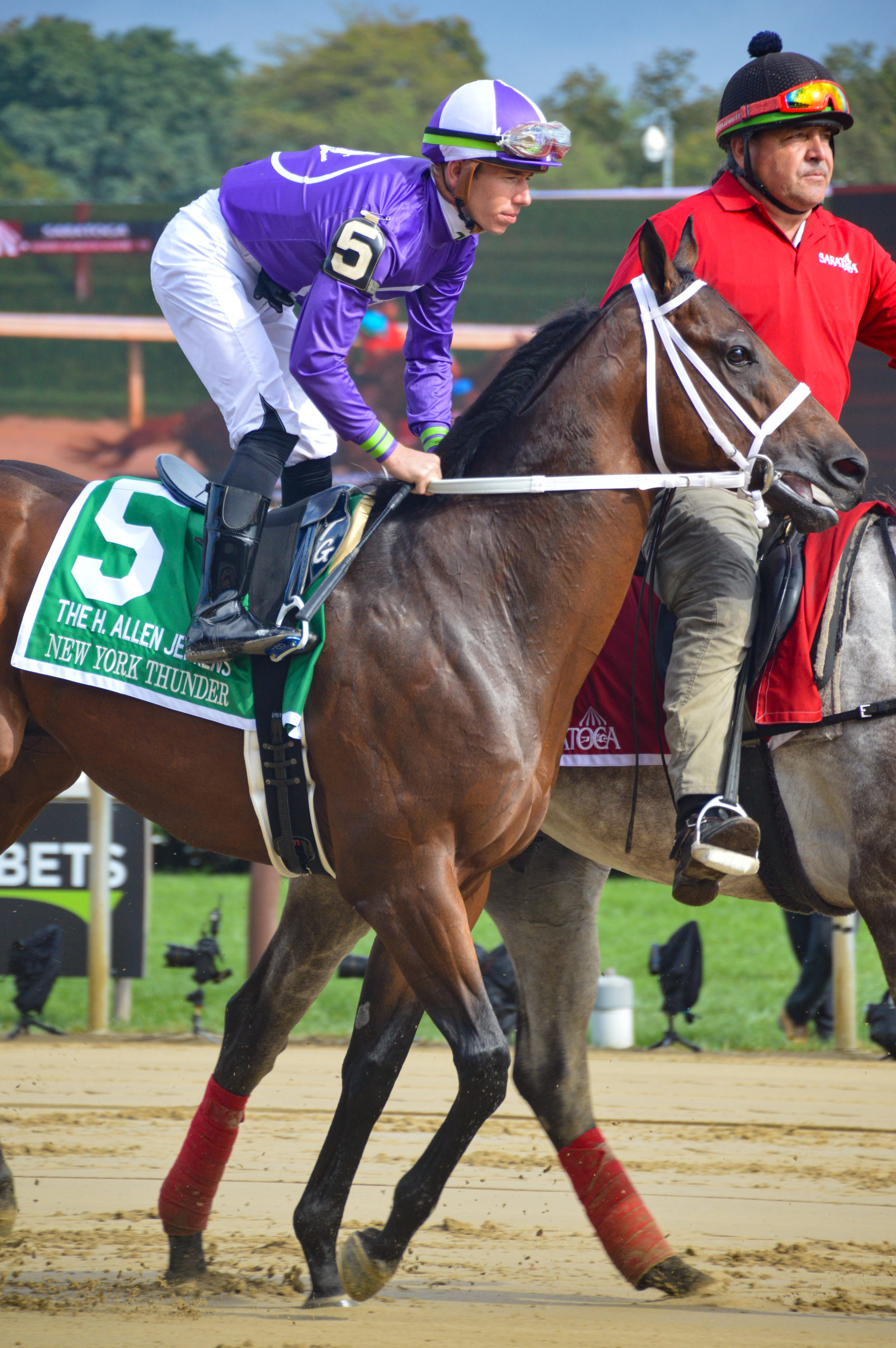
Let me tell you about New York Thunder. He was a good one. Physically he was plain-looking, lithe, and sinewy, but his record spoke for itself: four wins in as many races on three different surfaces, moving up in class and succeeding each time. A horse of this caliber is rare, and on this day it was going to be five. He took the lead from the start and reeled off quarters in 22 1/5, 44 2/5, and 1:08 4/5. This was a sprint race, and he was drawing away from the others—how lucky we were to be witnessing a racehorse in full splendor! At the same time I had an ominous feeling, thoughts of Maple Leaf Mel.
Suddenly his left front cannon bone snapped in half.
New York Thunder went down face first. His jockey was thrown ahead, luckily avoiding his falling mount and the oncoming herd of horses. New York Thunder quickly got up and ran towards the finish line as his leg flipped and flopped. He pounded on it more and more, then fell, then got up again, then was finally caught by handlers as he lost momentum, as the pain surely caught up to him, and stood calmly as he became surrounded. He had crossed the finish line. With rapid efficiency, the screens were brought out. I have photographed hundreds of racehorses since 2013. These weren’t the photographs I hoped to get. Through tears, I was determined: people need to know.

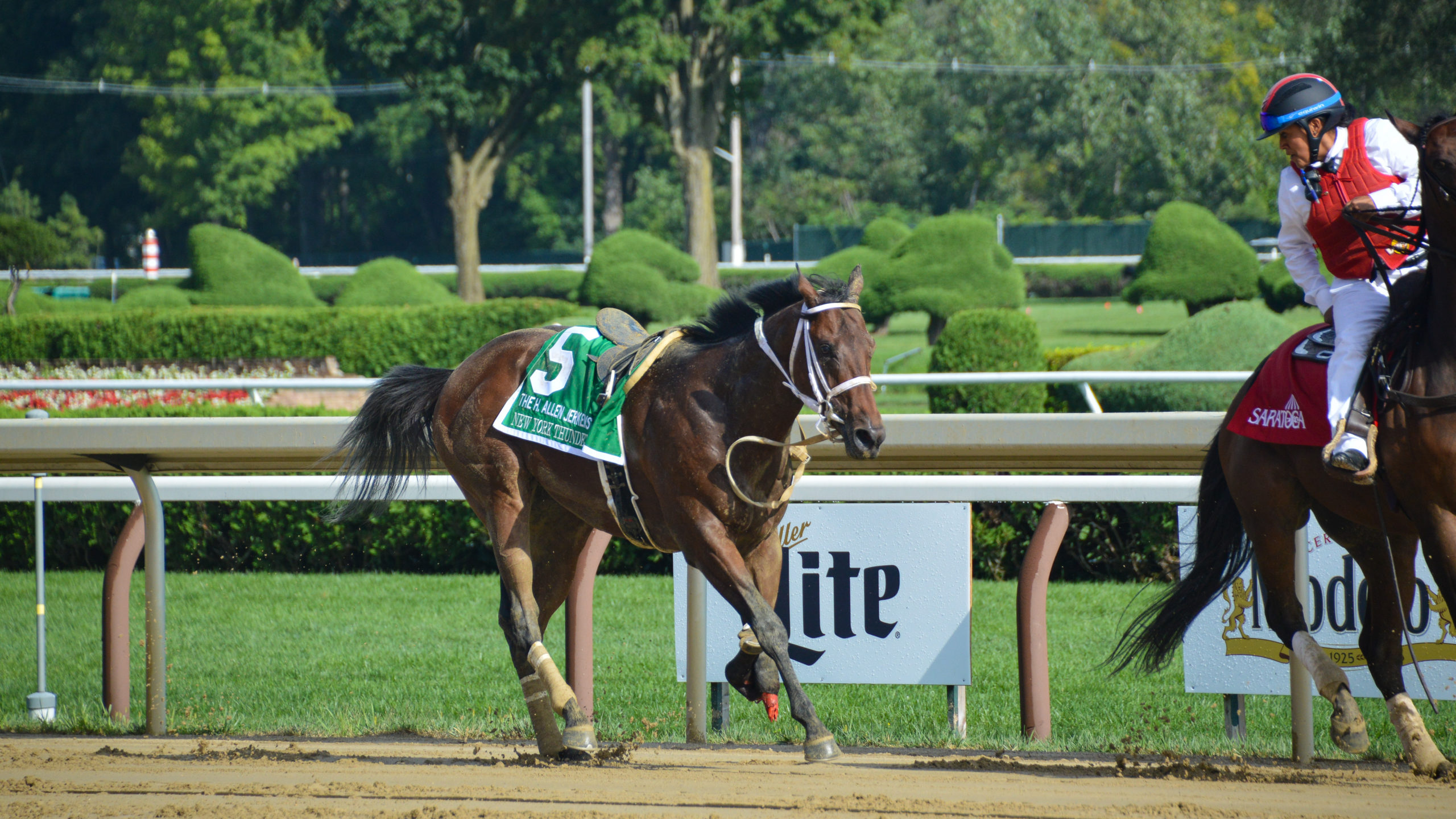
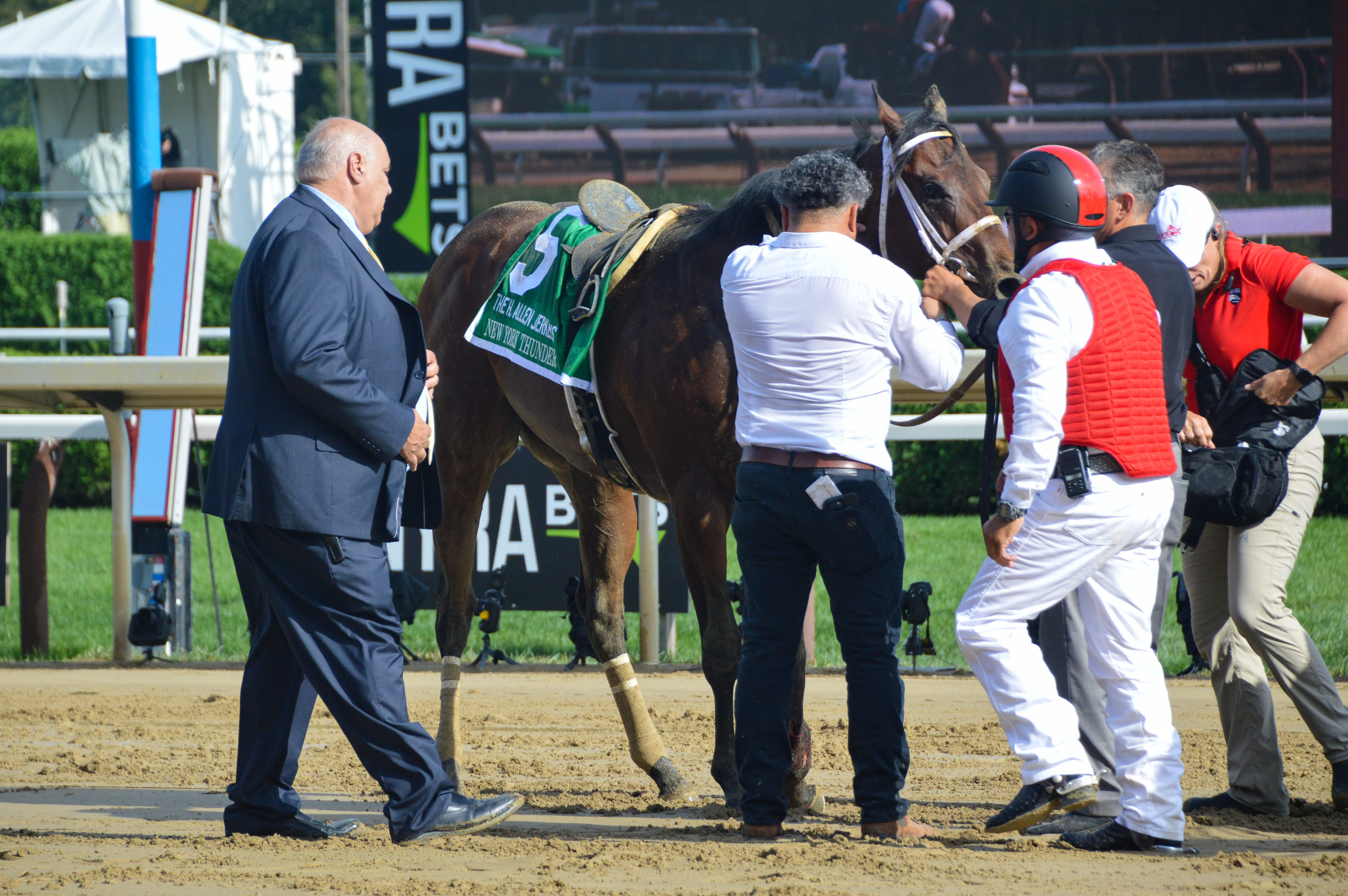
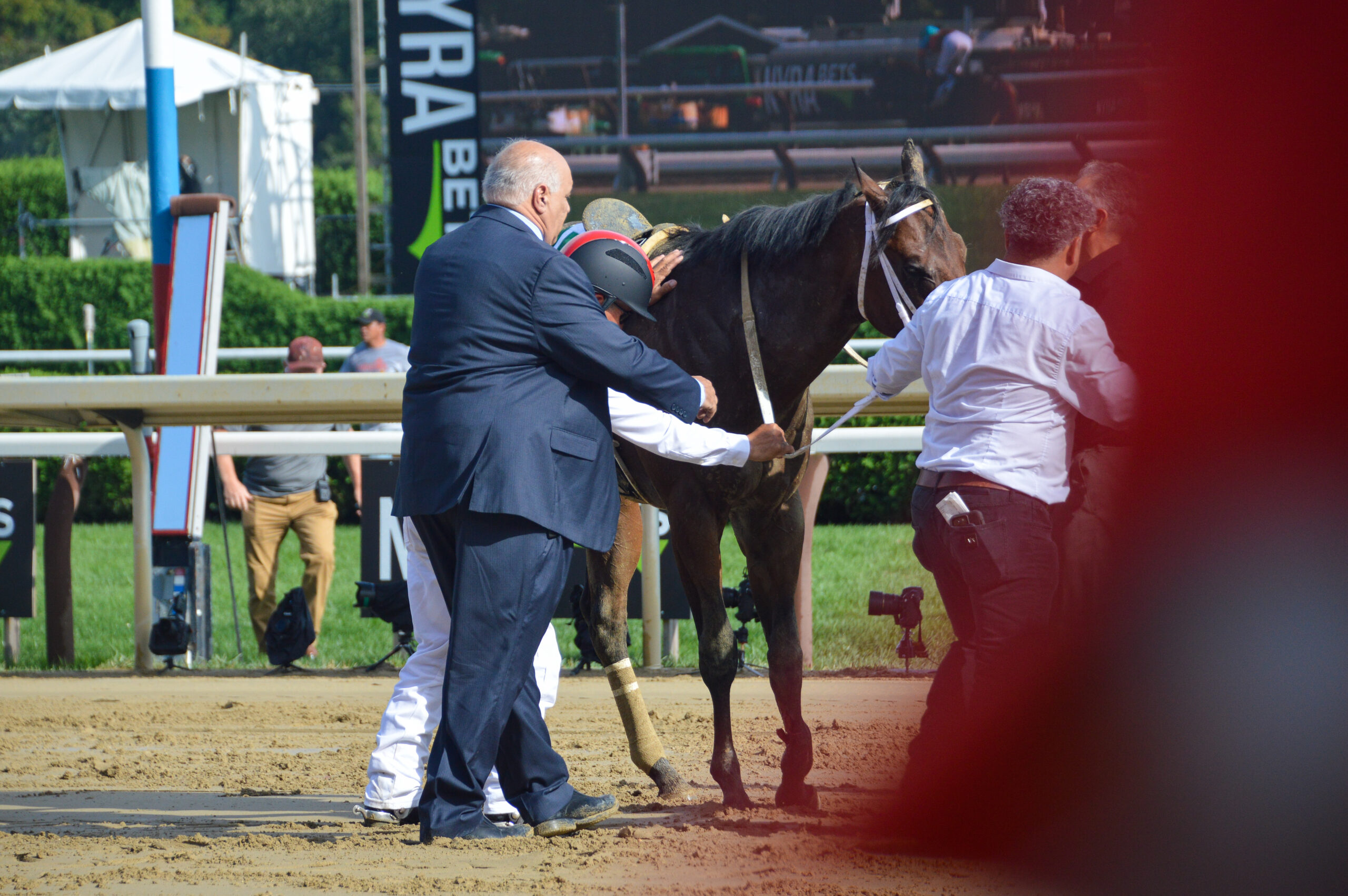
He had given everything. There was nothing that could be done to save him. The crowd was shielded, “protected” from seeing an athlete’s promising career and life being over, and his body being loaded into the trailer.
As horrific as this was, it was only shortly after that I noticed the crowd around me seemed apathetic. While there was no celebration for the “winner,” there was no acknowledgement of what had just happened either. They weren’t going to stop the races or take time to honor him. The trailer had long since driven off. The tractors harrowed the surface a couple extra times. The runners for the next race on dirt were called to the post. I found this nonchalance almost as disturbing as the actual breakdown. Only the sky, which had brought a cloudburst earlier, gave way to a rainbow.
It turns out that another horse named Nobel (who I did not see, as I came later in the day), bred in Ireland and raced in Britain, broke a leg and was euthanized on the turf course after what was his first race in the US. What if the races had been stopped then? What if New York Thunder was still alive? I see him—now—in the post parade, his bay coat glistening, beautiful. I see him minutes later with his leg dangling, helplessly, knowing it was the end.
I know New York Thunder would have been training well in the mornings. He would have passed pre-race veterinary exams, including observations before the start. The Blood-Horse published an article examining factors that may have contributed or led to New York Thunder’s breakdown. Certainly, he was worth more alive than dead.
From the moment he was born in Kentucky, all the people who cared for New York Thunder have my deepest condolences. I feel especially sad for the ones who came back to an empty stall that day. Unfortunately, what I saw at Saratoga utterly failed to reflect that. Cancelling racing—setting aside Saratoga’s belief that their tracks are safe—would have been out of respect, that Nobel’s and New York Thunder’s lives were valued and that they mattered. Death in a human sport would cause outrage. These horses? Their deaths are merely distractions. They are disposable. They are machines.
New York Thunder didn’t decide that one day he was going to be a racehorse. We made him one for us. He had more talent in those brilliant moments than many of us ever will. When he died because of what we made him do, he was not given a morsel of respect. I am so sorry, New York Thunder.
The racing industry puts out thousands of Thoroughbreds every year, each with the hopes of becoming a special racehorse, like New York Thunder was. They are also in need of a lifetime of care, something else humans fail to do more often than they should. I question whether we can respect racehorses not simply as entertainment, but instead as the professional athletes they truly are. They do so much for us. What, exactly, are we doing for them?
In memory of New York Thunder
March 14, 2020 – August 26, 2023
© Jessica Strauss

